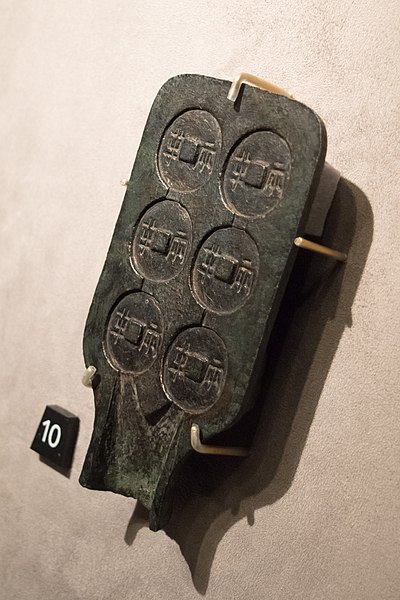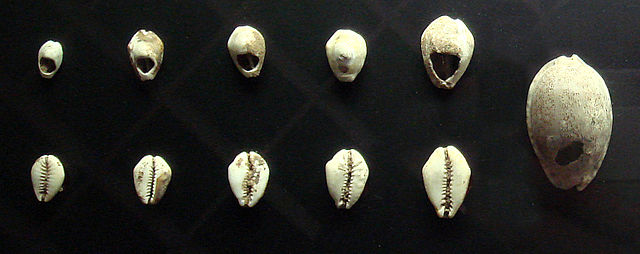The Ban Liang was the first unified currency of the Chinese empire, first minted as early as 378 BCE and introduced by the first emperor Qin Shi Huang as China's first unified currency around 210 BC. It was round with a square hole in the middle. Before that date, a variety of coins were used in China, usually in the form of blades or other implements, though round coins with square holes were used by the State of Zhou before it was extinguished by Qin in 249 BCE.
Bronze mold for minting Ban Liang coins, Warring States period (475-221 BC), State of Qin, from an excavation in Qishan County, Baoji, Shaanxi province
A Ban Liang cash coin cast under the reign of Empress Gao during the Western Han dynasty.
History of Chinese currency
The history of Chinese currency spans more than 3000 years. Currency of some type has been used in China since the Neolithic age which can be traced back to between 3000 and 4500 years ago. Cowry shells are believed to have been the earliest form of currency used in Central China, and were used during the Neolithic period.
Han dynasty cash coin
Old Chinese Currency used in 1920–23. This currency was also used in Hunza state.
Chinese shell money, 16–8th century BCE.
Silver sycee (yuanbao) ingots






